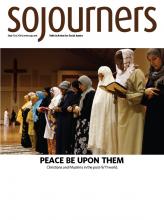After last December's repeal of "don't ask, don't tell" opened the doors for openly gay and lesbian people to serve in the military, a slew of elite universities, including Stanford, Harvard, Columbia, and Yale, invited the U.S. military's Reserve Officer Training Corps (ROTC) back on campus. The universities had banned ROTC during the Vietnam War. Their recent action will add to ROTC's expansion over the last four years, during which it has increased its enrollment on college campuses by 27 percent. More than 56,000 students spread over nearly 500 colleges in the U.S. are currently in ROTC, many receiving full-tuition military scholarships in exchange for up to 10 years apiece of active military service.
Alok Vaid-Menon, president of Stanford Students for Queer Liberation, led protests against the return of ROTC, calling the military's exclusion of transgender people a violation of Stanford’s nondiscrimination policy. But he was particularly "disturbed by the level of apathy" in the student body about the return of ROTC: "Most students didn't really get involved," Vaid-Menon told Sojourners.
There was little support for the historical -- and still relevant -- concerns that prompted ROTC's removal in the early 1970s: that the values of the military inherently contradict those of higher education. By handing space on their campuses back over to the military, these universities have failed to stand on the side of people of conscience who question and oppose militarism as the way to solve conflict.
At Stanford, the faculty senate voted 28 to 9 this April to bring ROTC back onto campus, more than 40 years after it stopped giving university credit for ROTC courses and started phasing the program off campus entirely. Its reasoning then, as a faculty committee stated in 1969, was that "ROTC departments are, by their nature, incompatible with the University’s primary commitment to the unrestricted creation and dissemination of knowledge."
Read the Full Article
